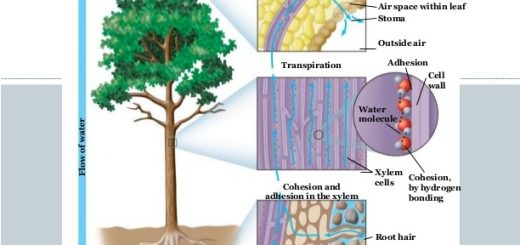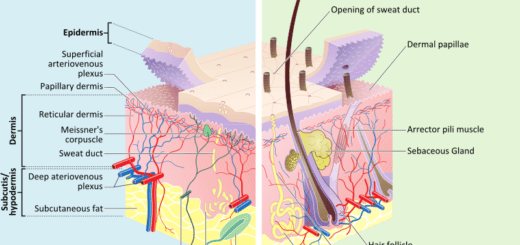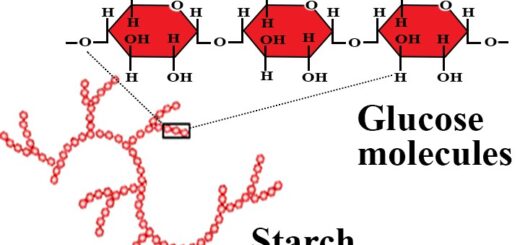Importance of reproduction, Gametes formation, Fertilization, Sexual and Asexual reproduction
Sexual reproduction depends on the meiosis division because, by mitotic division, the gametes are formed which is required to complete sexual reproduction. Asexual reproduction in plants does not need the presence of gametes because it is a vegetative reproduction that occurs by the plant’s organs (leaves, roots, and stems).
Reproduction process
How do living organisms keep their species from extinction?
Not all living organisms reproduce in the same way, to keep the continuity of their species and to avoid their extinction. The reproduction process is a biological process, where the living organism produces new individuals of the same kind, thus ensuring its continuity.
Importance of reproduction
It produces new individuals of the same kind and preserves them from extinction.
Types of reproduction
- Asexual reproduction occurs by only one living organism. It mostly occurs in single-celled living organisms (such as yeast and amoeba).
- Sexual reproduction occurs through two living organisms, one is a male and the other is a female. It occurs in most higher-living organisms (such as plants, animals, and human).
Asexual reproduction
Asexual reproduction is a process by which a living organism produces new individuals with genetic traits identical to those of their parent. It occurs in:
- Unicellular (single-celled) living organisms. Such as yeast, bacteria, and amoeba
- Some multicellular animals and plants. Such as Hydra, mushrooms, and starfish.
Properties of asexual reproduction
- Asexual reproduction takes place by only one living organism.
- It does not require special systems or structures in the living organism.
- It depends on mitotic division.
- It keeps the genetic structure of the living organism because it produces new individuals (offspring) identical in genetic structure to the original living organism during mitotic division. So, these new offspring get a full copy of the parent genetic traits without the occurrence of any genetic variation. And thus, there are no differences in the resulting offspring from the original organism.
If the number of chromosomes in the parental cell is (2N), the number of chromosomes in the offspring is (2N). Asexual reproduction needs neither special systems nor structures to occur because it takes place by mitotic division only through one individual.
Types of asexual reproduction
- Reproduction by binary fission.
- Reproduction by budding.
- Reproduction by regeneration.
- Reproduction by spore propagation.
- Vegetative reproduction.
Reproduction by binary fission
It occurs in: Unicellular living organisms as:
- Unicellular protozoans. Such as: Amoeba – Paramecium – Euglena.
- Simple algae and bacteria.
How does reproduction by binary fission occur?
The nucleus divides by mitotic division and the cell splits into two cells, and each cell grows and becomes a new individual.
Reproduction by binary fission in bacteria:
- The genetic material is doubled.
- The genetic material is distributed equally into two cells.
- Two identical cells are produced, each is identical to the parent cell.
Reproduction by binary fission is a type of asexual reproduction where the nucleus divides mitotically, then the cell splits into two identical cells. The cells that result by binary fission are identical to the parental cell because they are resulted from mitotic division. The parent cell which reproduces by binary fission disappears because it splits into two identical cells.
Reproduction by budding
It occurs in:
- Unicellular organisms. Such as Yeast fungus.
- Multicellular organisms. Such as Hydra and sponges.
How does reproduction by budding occur in a yeast fungus…?
Reproduction in a yeast fungus
- Add 1 ml of sugary solution and 4 ml of warm water to 2 ml of yeast solution in a plate and leave them in a warm dark place for 10 min.
- Put a drop from the mixture on a glass slide by using the teeth stick, then place the cover slide gently, Examine the slide under the microscope and record what you observe.
Reproduction by budding in a yeast fungus is as follows:
- A bud emerges as a lateral bulge in the cell.
- The cell nucleus divides mitotically into two nuclei, one of them remains in the parent cell and the other migrates to the bud.
- The bud which is connected to the parent cell grows gradually until it is fully grown, then it may remain connected to the parent cell forming a colony, or separate from the parent cell and becoming a new fungus.
Reproduction by budding is a type of asexual reproduction that produces new individuals by the formation of buds in the parent cell. The bud is a structure that emerges as a lateral bulge in the parent cell, where one of the two nuclei that formed by mitosis migrates to it.
Reproduction by regeneration
It occurs in Multicellular living organisms. Such as Starfish.
How does reproduction by regeneration occur…?
It occurs by growing of a cut part from the body of a living organism by mitotic division forming a new complete organism.
Regeneration and reproduction by regeneration in starfish
When a starfish loses one of its arms, So, The missing part of the animal can grow forming a complete animal, if it contains a part of the central disc, and this is known as reproduction by regeneration. Reproduction by regeneration is the ability of the missing part in some living organisms to grow forming a complete organism identical to the parent individual.
The remaining part of the animal can form a new arm instead of the missing one, and this is known as regeneration, Regeneration is the ability of animals to compensate for their missing parts.
If the number of chromosomes in cells of starfish is (2N), the number of chromosomes in cells resulting from regeneration is (2N) too, because regeneration is asexual reproduction that occurs by mitotic division.
Reproduction by sporogony (Spore propagation)
It occurs in:
- Some fungi. Such as Bread mould fungus and Mushroom fungus.
- Some algae.
How does reproduction by spore propagation occur…?
Spores are found in the bread mould fungus inside special organs which are called sporangium (pl. sporangia). When spores become mature. The sporangium ruptures and a large number of spores are released. When spores fall on a suitable environment (wet bread). Each spore grows by mitotic division to give a new organism (fungus) identical to the parent.
Reproduction by spore propagation is a type of asexual reproduction that occurs in some fungi and algae by producing spores. The sporangium is a special organ in some fungi and algae that carries a large number of spores until their maturity.
Spore propagation is a type of asexual reproduction that is common in some fungi such as bread mould and mushrooms because it occurs by only one parent and depends on mitotic division, where the produced individuals have the same genetic traits.
Vegetative reproduction
It occurs in: plants’ vegetative organs. (Such as leaves, roots, and stems) to produce new plants identical to the parent plant. Vegetative reproduction occurs without the need for seeds.
How does vegetative reproduction occur…?
Vegetative reproduction in plants occurs by mitotic division where it happens:
- Naturally: By plant’s vegetative organs (leaves, roots, and stems).
- Artificially: In many ways such as tissue culture.
Vegetative reproduction is a type of asexual reproduction that takes place in plants’ vegetative organs without the need for seeds. There are no new races (new individuals with other new genetic traits) of plants when they reproduce by vegetative reproduction because vegetative reproduction depends on mitotic division, in which the produce cells contain a full copy of the genetic material of the parent cells.
Sexual reproduction
Sexual reproduction is a biological process that occurs between two parental individuals of the same kind (male and female) to produce new individuals who have new genetic traits that combine the parents’ genetic traits.
It occurs in: Most multicellular (higher) living organisms of plants and animals.
Properties of sexual reproduction
- It occurs between two parental individuals, one of them is a male and the other is a female.
- It takes place by special reproductive organs and systems
- It depends on meiotic division.
Sexual reproduction is a source of genetic variation between individuals due to the occurrence of the crossing-over phenomenon during the formation of gametes through the meiotic division, and also the offspring resulted from sexual reproduction gets genetic traits from two sources (the male and the female), The resulted offspring has new genetic traits that combine the parents’ traits.
Sexual reproduction occurs in most higher living organisms of plants and animals because it depends on the presence of two parents (male and female), and also requires the main processes which are gametes formation and fertilization. It depends on two main processes:
Gametes formation
Gametes of a male and a female are formed in the living organism as a result of the meiotic division of its reproductive cells. Gametes contain half the number of the chromosomes (N) of the organism’s reproductive or somatic cells (2N).
Fertilization
Fertilization is the combination of a male gamete (N) and a female gamete (N) to form a zygote (2N). The zygote contains genetic material from both parents, and it grows to give new offspring with genetic traits from both parents. The zygote is a cell produced due to fertilization and it contains the complete number (diploid number) of chromosomes of the living organism
The number of chromosomes is constant in the same species that reproduce sexually due to meiosis division (which reduces the number of chromosomes) in gametes, then the combination of male gamete (N) and female gamete (N) to form the zygote which contains the whole number (diploid number) of chromosomes (2N).
The zygote has the same number of chromosomes as cells of the parental organism because it is produced from the combination of a male gamete (N) and a female gamete (N), each of them contains half the number of chromosomes of the parental organism.
You can subscribe to science online on YouTube from this link: Science Online
You can download Science Online application on Google Play from this link: Science Online Apps on Google Play
Reproduction, Types of sexual reproduction (Conjugation, Reproduction by sexual gametes)
Phases of Meiotic cell division (Meiosis), Nanotechnology and cancer treatment
Methods of reproduction in living organisms (Asexual reproduction & Sexual reproduction)



